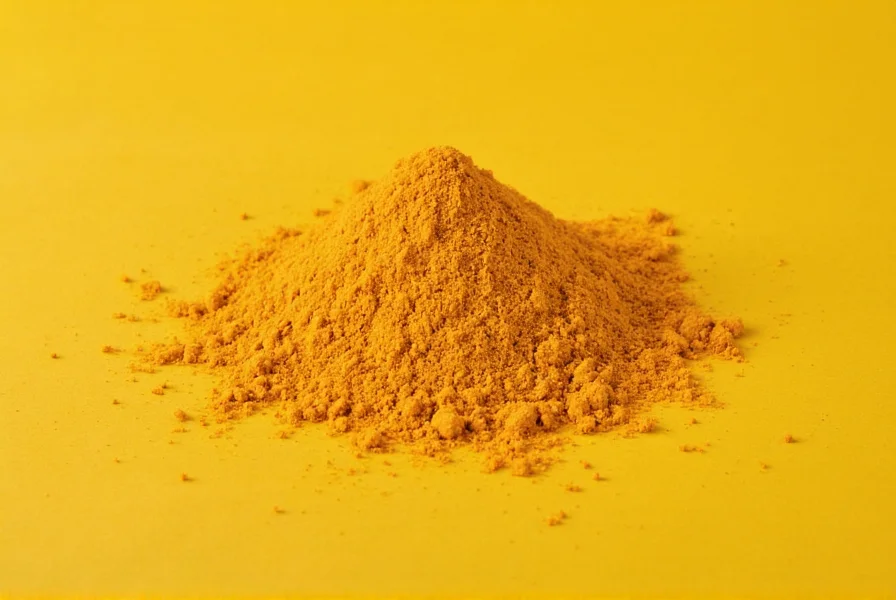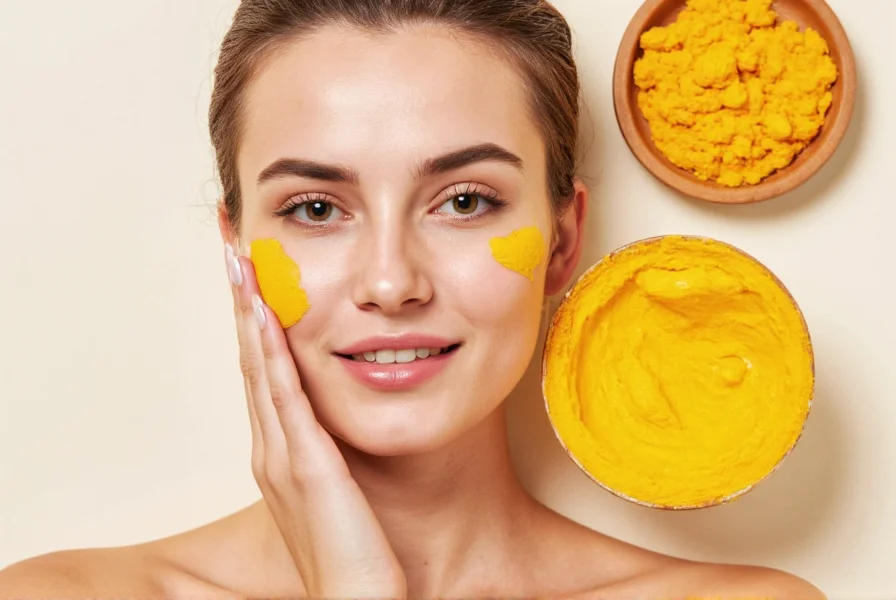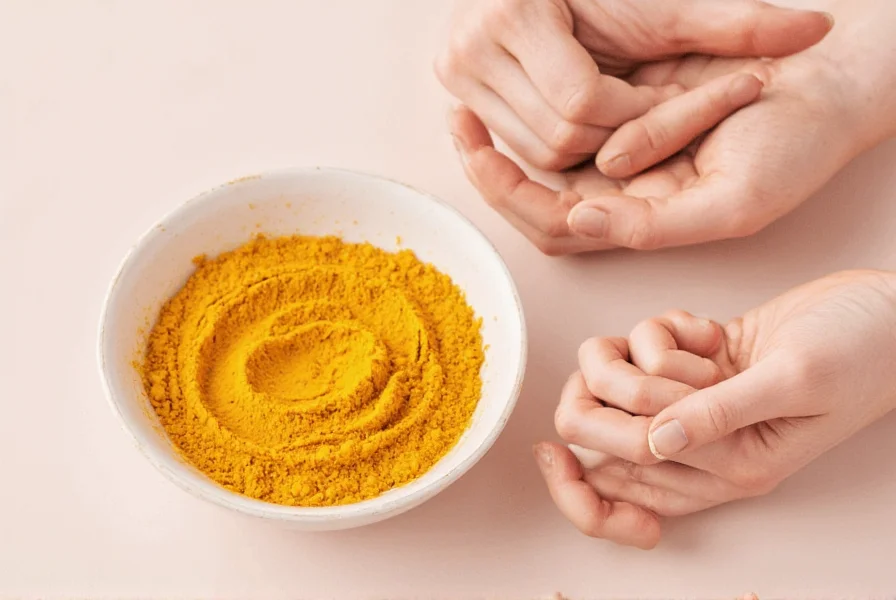For centuries, turmeric has been a staple in traditional Ayurvedic and Chinese medicine for treating various skin conditions. This golden spice, derived from the Curcuma longa plant, contains curcumin—the active compound responsible for most of its therapeutic effects. Modern research continues to validate many of these traditional uses while revealing new applications for skin health.
The Science Behind Turmeric's Skin Benefits
Curcumin, turmeric's primary bioactive component, demonstrates potent anti-inflammatory and antioxidant properties that directly benefit skin health. Studies published in Phytotherapy Research and the Journal of Clinical and Aesthetic Dermatology confirm that curcumin inhibits multiple inflammatory pathways, making it particularly effective for inflammatory skin conditions.
However, curcumin has low bioavailability when applied topically. Research shows that combining turmeric with black pepper (which contains piperine) or healthy fats significantly enhances absorption. A 2020 study demonstrated that formulations containing 1% curcumin with phospholipids increased skin penetration by 27-fold compared to standard preparations.

Evidence-Based Skin Benefits of Turmeric
Multiple clinical studies support specific skin benefits of properly formulated turmeric products:
| Skin Concern | Research Findings | Recommended Application |
|---|---|---|
| Acne and inflammation | 85% reduction in inflammatory lesions in 4 weeks (Journal of Drugs in Dermatology) | Topical gel with 1% curcumin, applied twice daily |
| Hyperpigmentation | Significant improvement in melasma after 4 weeks (Dermatologic Surgery) | Face mask with turmeric, yogurt, and honey 2-3 times weekly |
| Wound healing | Accelerated healing of surgical wounds by 29% (Wound Repair and Regeneration) | Medical-grade turmeric ointment applied to clean wounds |
| Psoriasis symptoms | 50% improvement in PASI scores after 6 weeks (Phytotherapy Research) | Oral supplementation (500mg curcumin daily) plus topical application |
How to Use Turmeric for Skin Care
Effective turmeric skincare requires proper formulation to maximize benefits while minimizing potential issues like staining. Here are evidence-based methods:
Topical Applications
Golden milk face mask: Combine 1 teaspoon turmeric powder with 2 tablespoons plain yogurt and 1 teaspoon honey. Apply for 15-20 minutes before rinsing with lukewarm water. This formulation leverages yogurt's lactic acid for gentle exfoliation while honey provides additional antimicrobial benefits.
Spot treatment for acne: Mix equal parts turmeric powder and aloe vera gel to create a paste. Apply directly to inflamed pimples and leave for 10-15 minutes before rinsing. The aloe vera reduces potential irritation while enhancing curcumin's anti-inflammatory effects.
Oral Supplementation
For systemic benefits, consider standardized curcumin supplements (typically 500mg) with piperine (black pepper extract) to enhance absorption. Research in the Journal of Cosmetic Dermatology shows that daily supplementation improves overall skin radiance and reduces inflammatory skin conditions from within.

Potential Side Effects and Precautions
While generally safe, turmeric can cause issues for some users:
- Skin staining: Turmeric's yellow pigment can temporarily stain light skin tones. Using lower concentrations (1/4 to 1/2 teaspoon per application) and adding milk or yogurt reduces this risk
- Allergic reactions: Patch test before full application—apply a small amount to inner forearm and wait 24 hours
- Photosensitivity: Turmeric may increase sun sensitivity in some individuals; always follow with sunscreen
- Medication interactions: Consult a healthcare provider if taking blood thinners or diabetes medications
Limitations of Turmeric for Skin Health
Despite its benefits, turmeric isn't a miracle cure. Research shows it works best as part of a comprehensive skincare routine rather than a standalone solution. Its effectiveness varies based on:
- Individual skin chemistry and condition severity
- Formulation quality and curcumin concentration
- Consistency of use (most studies show results after 4-8 weeks)
- Combination with other proven skincare ingredients
For serious skin conditions like severe acne, eczema, or psoriasis, consult a dermatologist before relying solely on natural remedies. Turmeric can complement medical treatments but shouldn't replace prescribed therapies for significant skin issues.
Practical Tips for Maximum Benefits
To get the most from turmeric skincare:
- Store turmeric products in dark, airtight containers as light degrades curcumin
- Combine with healthy fats (coconut oil, almond oil) to boost absorption
- Use fresh turmeric root when possible—it contains higher curcumin levels than powdered forms
- Apply turmeric treatments in the evening to minimize sun exposure risks
- Start with lower concentrations and gradually increase as your skin adjusts
Conclusion
Turmeric offers scientifically supported benefits for various skin concerns, particularly those involving inflammation and oxidative stress. When properly formulated and used consistently, it can be a valuable addition to a skincare routine. The most effective approaches combine topical application with oral supplementation while addressing individual skin needs. Remember that natural doesn't always mean risk-free—proper usage and awareness of potential side effects ensure you can safely enjoy turmeric's skin-enhancing properties.
Frequently Asked Questions
How long does it take to see results from using turmeric on skin?
Most clinical studies show visible improvements in skin conditions like acne and hyperpigmentation after 4-8 weeks of consistent use. Inflammatory conditions may show improvement within 2-3 weeks, while texture and brightness improvements typically require 6-8 weeks. Results vary based on individual skin type, condition severity, and product formulation.
Can turmeric remove dark spots permanently?
Turmeric can significantly reduce the appearance of dark spots through its anti-inflammatory and antioxidant properties, but it doesn't provide permanent removal. Research shows it inhibits melanin production, leading to gradual lightening of hyperpigmentation. For lasting results, consistent use combined with sun protection is essential, as UV exposure can cause recurrence. Most studies report 30-50% improvement after 8-12 weeks of regular application.
Is raw turmeric better than supplements for skin health?
Both forms offer benefits but work differently. Raw turmeric in topical applications provides direct anti-inflammatory effects on the skin surface, while high-quality curcumin supplements (with absorption enhancers like piperine) deliver systemic benefits that improve overall skin health from within. Research suggests a combination approach yields the best results—topical application for targeted concerns plus oral supplementation for comprehensive skin support.
Can I leave turmeric on my face overnight?
While some people do leave turmeric masks on overnight, it's generally not recommended due to potential staining and increased risk of irritation. Most dermatologists suggest limiting direct turmeric application to 15-20 minutes for beginners, gradually increasing to 30-60 minutes as your skin adjusts. If you want extended treatment, consider using formulated turmeric skincare products designed for longer wear rather than raw turmeric mixtures.
Does turmeric help with aging skin and wrinkles?
Yes, turmeric shows promise for aging skin. Its potent antioxidant properties combat free radical damage that contributes to wrinkles and loss of elasticity. A 2019 study in the Journal of Cosmetic Dermatology found that a topical formulation containing 1% curcumin significantly improved skin firmness and reduced fine lines after 12 weeks of use. Turmeric also supports collagen production and reduces inflammation that accelerates skin aging, making it a valuable addition to anti-aging routines.











 浙公网安备
33010002000092号
浙公网安备
33010002000092号 浙B2-20120091-4
浙B2-20120091-4